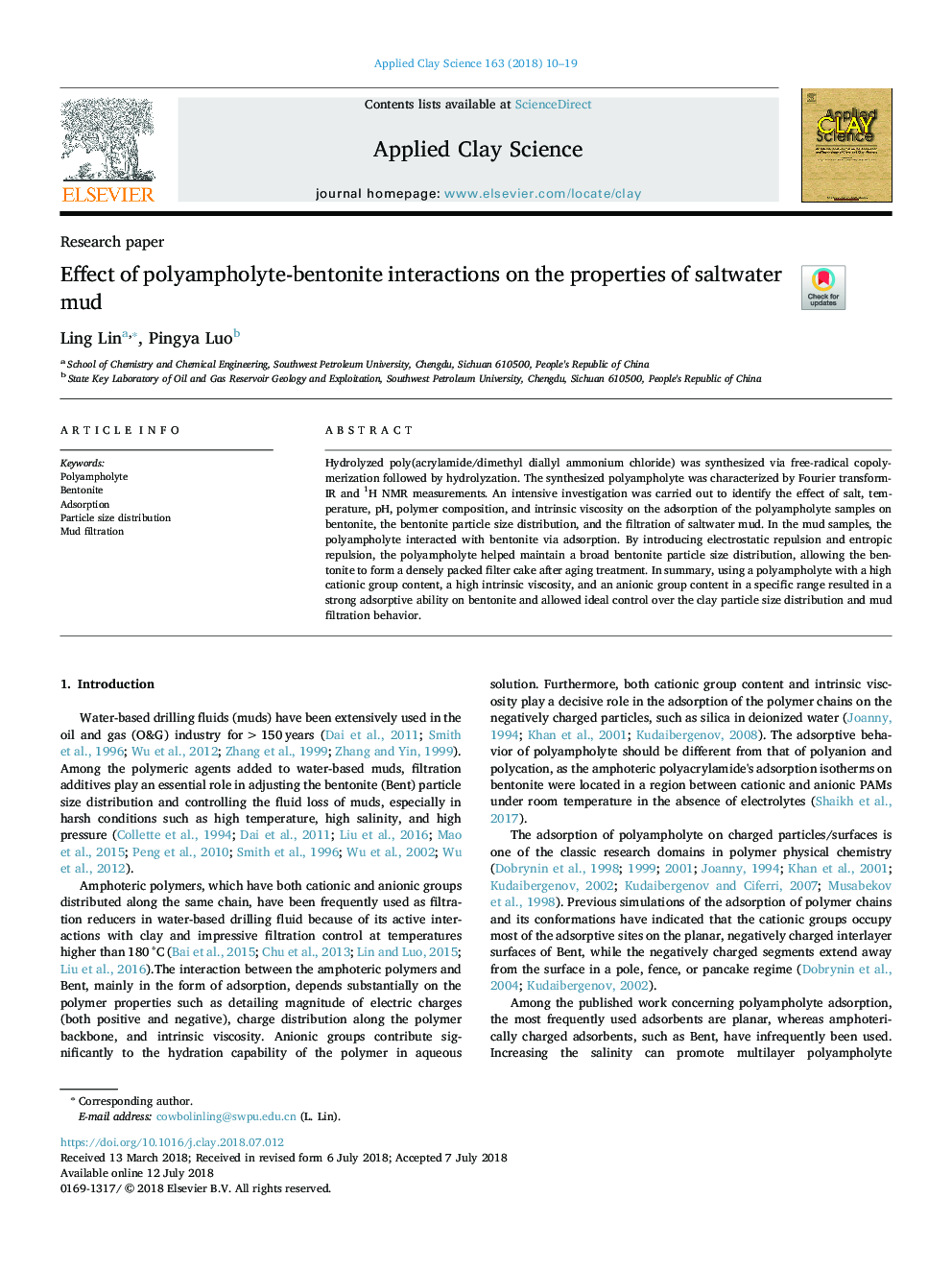| Article ID | Journal | Published Year | Pages | File Type |
|---|---|---|---|---|
| 8045571 | Applied Clay Science | 2018 | 10 Pages |
Abstract
Hydrolyzed poly(acrylamide/dimethyl diallyl ammonium chloride) was synthesized via free-radical copolymerization followed by hydrolyzation. The synthesized polyampholyte was characterized by Fourier transform-IR and 1H NMR measurements. An intensive investigation was carried out to identify the effect of salt, temperature, pH, polymer composition, and intrinsic viscosity on the adsorption of the polyampholyte samples on bentonite, the bentonite particle size distribution, and the filtration of saltwater mud. In the mud samples, the polyampholyte interacted with bentonite via adsorption. By introducing electrostatic repulsion and entropic repulsion, the polyampholyte helped maintain a broad bentonite particle size distribution, allowing the bentonite to form a densely packed filter cake after aging treatment. In summary, using a polyampholyte with a high cationic group content, a high intrinsic viscosity, and an anionic group content in a specific range resulted in a strong adsorptive ability on bentonite and allowed ideal control over the clay particle size distribution and mud filtration behavior.
Related Topics
Physical Sciences and Engineering
Earth and Planetary Sciences
Geochemistry and Petrology
Authors
Ling Lin, Pingya Luo,
